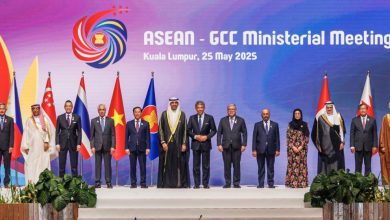Philips CEO: China business, supply chain undergoing major changes

AMSTERDAM : Making more products for China locally and buying chips from several suppliers are just two of the supply chain changes Dutch healthcare technology firm Philips is making due to rising trade tensions, its CEO Roy Jakobs told Reuters.
The company intends to ensure that 90 per cent of products for the Chinese market are sourced and assembled in China by 2024 – up from 75 per cent at present and 48 per cent in 2022.
Following computer chip shortages during the COVID-19 pandemic that hit profits, the company is also changing how it procures tailor-made chips that go into its CT scanners and ultrasound machines. It now favours newer but more expensive chips to ensure they are available from several locations in a pinch.
These trends mean price increases, but not margin sacrifices, Jakobs said in an interview.
“Before we were all seeking the optimal global supply chain efficiency,” he said. Now “you need to source, manufacture and deliver much closer to your end markets” even if that means higher costs.
Jakobs took the top job at Philips in 2022 amid a major recall of sleep apnea and respiratory devices. He says managing the recall and its costly aftermath remain his top priority.
But “it is also important that I make sure the rest of Philips does well,” he said. Shares are up 31 per cent in 2023.
China, where Philips has operated for 100 years and is known as “Philipu”, is the company’s second-largest national market after the U.S., accounting for about 13-15 per cent of revenue with 8,000 employees and five production sites.
Philips’ China business boomed before the pandemic, but that trend is slowing, Jakobs said. More modest future growth will come from China’s increasing reliance on healthcare technology as its workforce shrinks and ages.
While Germany has called on companies to “derisk” from China, Netherlands-based Philips will continue to source Chinese components including nuts, bolts, plastics, electronics, monitors and other semi-finished goods for its operations around the world.
“The smaller you go in parts, the more it will get it coming out of China,” he said. “Second, third, fourth tier suppliers in China do a lot for the whole world …(realistically) there will be a certain continuous dependency on China”.
But “the higher you go up in the value chain, the more you will have to cater to local (national) requirements,” he said.



